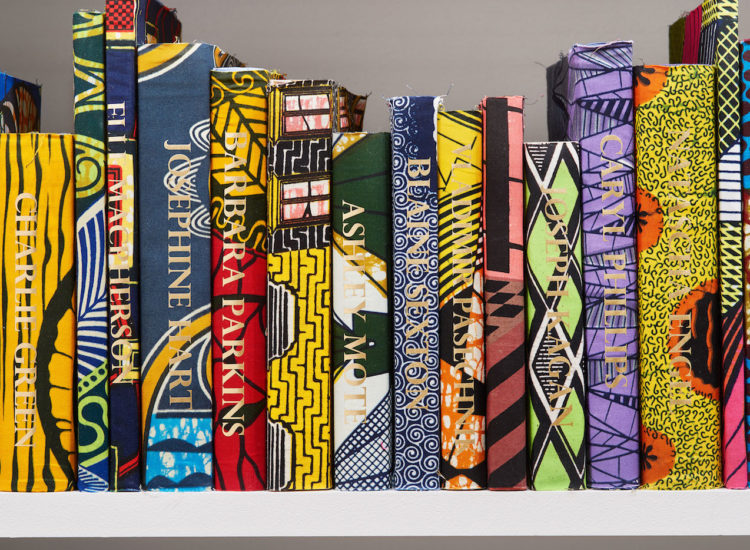For his latest exhibition, Yinka Shonibare has transformed part of Chelsea’s James Cohan gallery into a library, the stacks housing no less than 6,000 books bound in the Nigerian-British artist’s trademark Dutch wax printed cotton textile in a multitude of many-colored patterns.
It’s a visually compelling experience with a timely message: each book has the name of an immigrant to the UK printed on its spine, in celebration of their contributions to British culture. Some are well-known, like American-born author T.S. Eliot and Iraqi-born architect Zaha Hadid. Others are likely unfamiliar. There is a desk in the middle of the room, outfitted with iPads that visitors can use to look up the names and learn about the nature of their careers.
The installation, titled The British Library, is making its first stateside appearance in this exhibition, having debuted at the UK’s Brighton Festival in 2014. The perfect rebuttal to the Donald Trump administration and its vilification of immigrants, it’s presented alongside three other works by Shonibare, plus one of his headless statues, depicting historic widow Eliza Jumel. Her ghost is still said to haunt the Morris-Jumel Mansion in Washington Heights, where the artist had a show in 2015.
Yinka Shonibare, The British Library (2014). Courtesy of James Cohan, New York, photo by Phoebe D’Heurle, © Yinka Shonibare MBE.
The show opens with Orange Blob, an arrangement of paintings on textile hung against a rectangular section of orange wall paint. In the main gallery, The Victorian Philanthropist’s Parlour (1996–97), a set-like installation, places the sitting room of a wealthy 19th century family behind a velvet rope.
As always, the use of the wax printed batik textile, so popular in Africa, brings the background of colonialism to the fore, here suggesting the wealthy white man be put on the sort of enthographic display historically reserved for Asian, African, and Native American peoples in the World’s Fairs of the 19th century.
It’s shown opposite of Dorian Gray (2001), a series of 12 photographs in which Shonibare retells the classic Oscar Wilde tale featuring a protagonist whose face never ages, while his portrait, kept a careful secret, shows the true degradation of his soul. Shonibare casts himself, a disabled black man, as Gray, assuming a position of power that would almost-certainly not have been open to him during the time the book was written.
Together, the works offer a powerful statement about the dangers of prejudice, serving as a reminder that our global history is one of both migration and cultural diffusion.
“Yinka Shonibare: Prejudice at Home: A Parlour, a Library, and a Room” is on view at James Cohan Gallery, 533 West 26th Street, New York, February 17–March 18, 2017.
